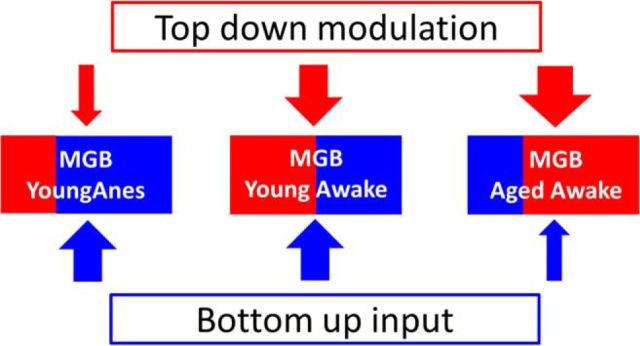Figure 1.
Bottom-up/top-down circuits among young anesthetized, young awake, and aged awake rats. Both bottom-up and top-down circuits are used to recognize/identify salient acoustic information from one's environment. We propose that MGB neurons in young awake/alert rat balance selective temporally rich bottom-up (blue arrow) inputs with top-down (red arrow) circuits, which help the animal identify complex temporal information. Responses from MGB neurons in anesthetized rats appear dominated by bottom-up adaptive processes, suggesting a reduction of top-down processing. We posit that the degraded up-stream temporal responses seen in the aged brainstem result in increased top-down resources needed to maintain salience by enhancing the responses to the next expected signal.

